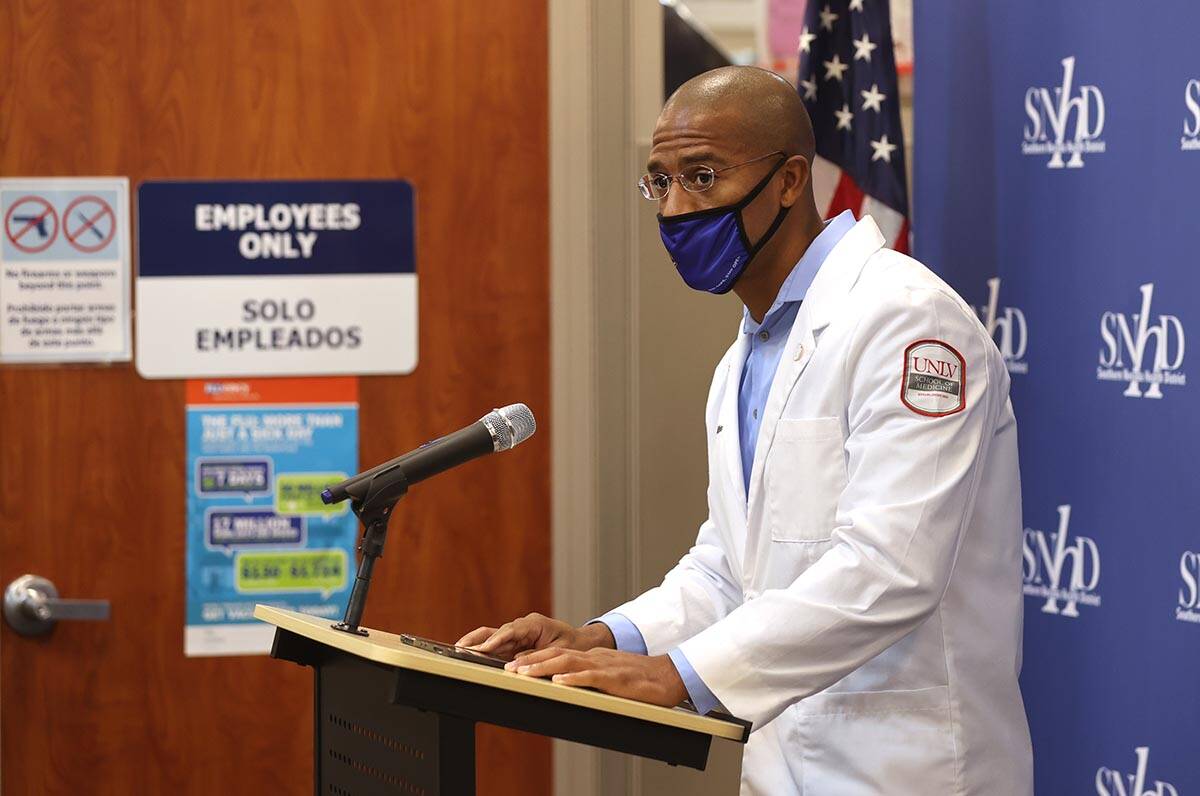Flu on the rise; could COVID be to blame?
The nation is experiencing a late spring resurgence of flu, including in Nevada, which is seeing moderate levels of influenza well past the typical season for the winter virus.
Flu cases and hospitalizations in Clark County have been rising since March, a time of year when normally they’d be falling, Cassius Lockett, director of disease surveillance and control for the Southern Nevada Health District, said on Wednesday.
The unusual pattern nationwide has health officials puzzled — or, as one authority put it — “flu-ummoxed.”
“It was tracking as though we were going to have a moderately severe influenza season. Then it dropped like a stone,” said Dr. William Schaffner, an infectious disease professor at Vanderbilt University.
“It went below the epidemic threshold, and then began to creep up again,” he said. “And what we are seeing now is a substantial amount of late-season influenza.”
A COVID connection
Since the emergence of COVID-19, the seasonal patterns of flu and some other respiratory viruses have changed, though it remains unclear exactly why, Schaffner said. Respiratory syncytial virus, or RSV, a winter virus, was prevalent last summer.
Earlier social distancing and mask-wearing could have interrupted the spread of flu. Or, he said, a more provocative but as-yet unproven hypothesis is that the flu virus over the winter might have “competed” with the omicron variant to spread by attaching to the back of the nose and throat.
“It’s just got us all flu-ummoxed because we don’t have a ready understanding,” he said.
Regardless of the reason, flu continues to smolder across the country, much of which is experiencing low levels of flu. Nevada is one of a handful of states with moderate levels of the virus, and New Mexico and Florida have high levels, according to the Centers for Disease Control and Prevention.
Flu season in Nevada typically is over by April, but both cases and hospitalizations have been increasing.
Las Vegas pediatrician Dr. David Di John said he knew of at least 10 children hospitalized locally for flu, or from pneumonia stemming from the flu, in roughly the past month.
This is “way more than I would expect at this time of year,” said Di John, an associate professor and section chief for pediatric infectious diseases in the Kirk Kerkorian School of Medicine at UNLV.
This influenza season in Clark County, there have been 10 flu deaths and 376 hospitalizations, including 52 hospitalizations in children but no deaths, according to the health district. At this time last year, there had been six deaths and 53 total hospitalizations, in what was a mild flu season.
The Nevada Hospital Association, which tracks only type A flu — the strain most likely to contribute to pandemic levels of spread — currently reports 19 flu hospitalizations statewide, including 16 in Southern Nevada.
“Type-A flu is not burdening hospitals in Nevada or specifically Southern Nevada,” association executive director Chris Lake said in an email.
Fighting the flu
With flu and COVID-19 on the rise, some authorities are recommending a return to wearing masks.
Lockett recommends masking at indoor gatherings, including graduation and other celebrations.
“Masking is a win-win situation for both the flu and for COVID,” he said, and an especially good strategy for the immunocompromised and the elderly and frail.
Since the state lifted requirements for social distancing and mask-wearing, Nevada is “now seeing an increase in influenza, along with other respiratory viruses that were previously kept at low levels with the mitigation measures in place,” Dawn Cribb, a representative of the Nevada Department of Health and Human Services, said in an email.
Flu shots continue to be available and recommended as long as the virus is in circulation, she said.
Schaffner noted, however, that this year’s flu shot is not well-matched to the primary strain currently in circulation, type A subtype H3N1, rendering it “not very effective.”
The symptoms of flu and COVID-19 can be very similar — sore throat, congestion, fever. Lockett recommended that people with symptoms test early for COVID-19, and that they follow up a negative home rapid test with a PCR test, since rapid tests are better at determining whether a person is contagious than if they’re infected.
There are separate anti-viral medications used to treat COVID-19 and flu. Flu medications are most effective if taken within 48 hours after the onset of symptoms.
Antiviral treatment is recommended for those at higher risk for influenza complications, Cribb said.
Contact Mary Hynes at mhynes@reviewjournal.com or 702-383-0336. Follow @MaryHynes1 on Twitter.

















